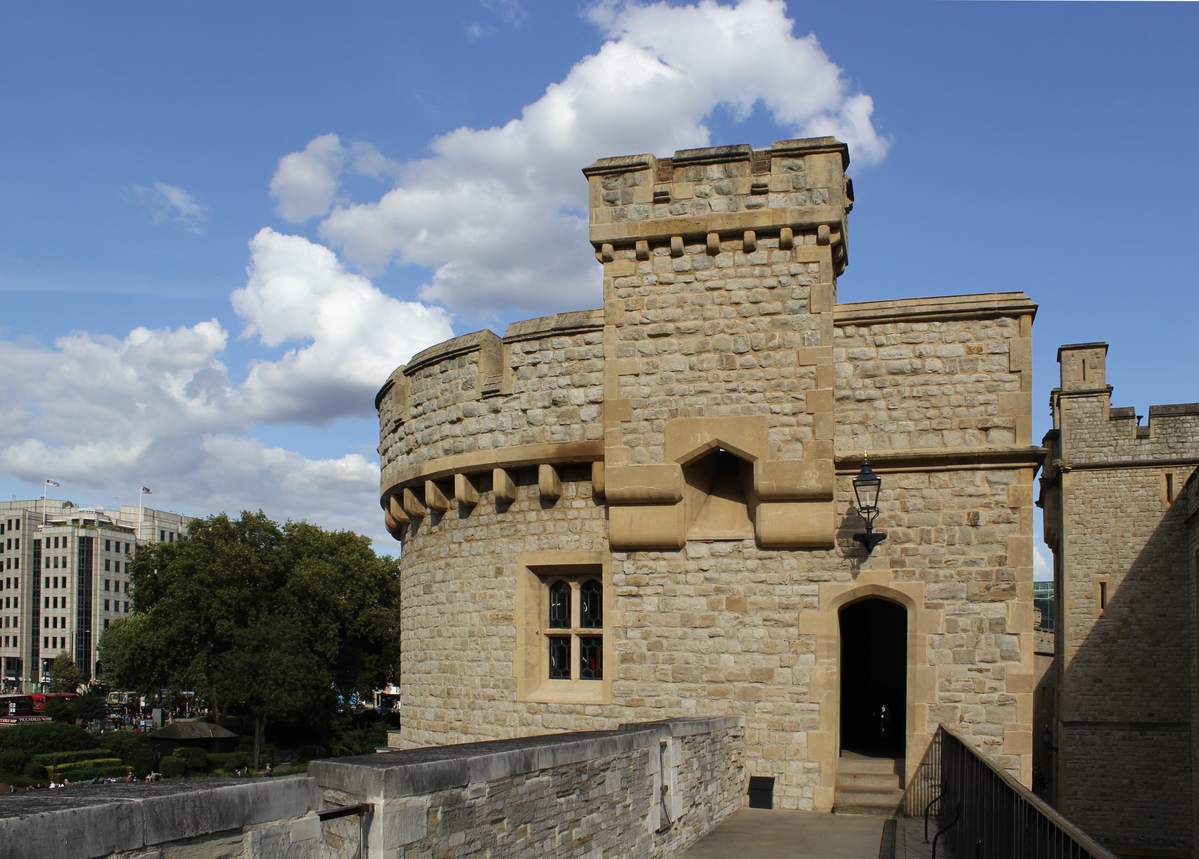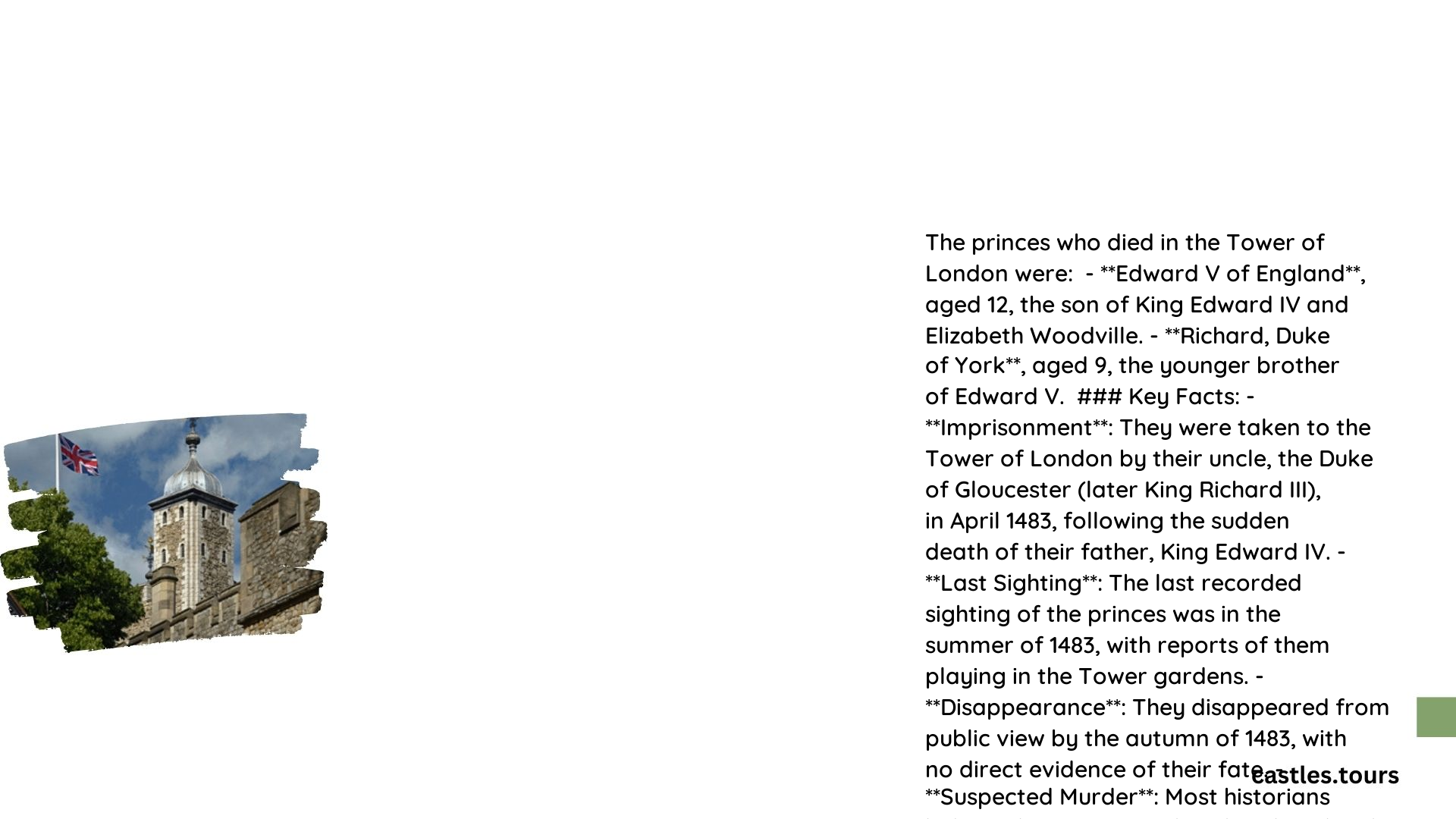The tragic tale of the Princes in the Tower remains one of history’s most enduring mysteries. Edward V and Richard of Shrewsbury, sons of King Edward IV, were lodged in the Tower of London in 1483. Their uncle, Richard III, declared them illegitimate and ascended the throne. The young princes were never seen again, presumed murdered. This event has captivated historians and the public for centuries, spawning numerous theories about their fate.
Who Were the Princes in the Tower?

The Princes in the Tower refer to two young royals:
- Edward V of England (born 1470)
- Richard of Shrewsbury, Duke of York (born 1473)
Both were sons of King Edward IV and Elizabeth Woodville. Their disappearance in 1483 remains one of the most infamous unsolved mysteries in British history.
What Led to Their Imprisonment?

The sequence of events that led to the princes’ confinement in the Tower of London is as follows:
- April 9, 1483: King Edward IV dies
- April 29, 1483: Richard, Duke of Gloucester (later Richard III) intercepts Edward V at Stony Stratford
- May 19, 1483: Edward V is lodged in the Tower of London
- June 16, 1483: Richard of Shrewsbury joins his brother in the Tower
- June 25, 1483: Parliament declares the princes illegitimate
Why Were They Declared Illegitimate?
The declaration of the princes’ illegitimacy was a crucial turning point. Here are the key reasons:
- Claim of pre-contract: It was alleged that Edward IV had a pre-existing marriage contract before his marriage to Elizabeth Woodville
- Political maneuvering: This declaration paved the way for Richard III to claim the throne
- Lack of evidence: No concrete proof of the pre-contract was ever produced
What Theories Exist About Their Fate?
Several theories have emerged over the centuries regarding the fate of the princes:
- Murder on Richard III’s orders
- Secret relocation to safety
- Natural deaths due to illness
- Survival of one or both princes
| Theory | Proponents | Key Evidence |
|---|---|---|
| Murder by Richard III | Traditional historians | Contemporary accounts, later confessions |
| Secret relocation | Revisionist historians | Lack of bodies, later claimants |
| Natural deaths | Some modern scholars | Poor health conditions in the Tower |
| Survival | Conspiracy theorists | Later claimants like Perkin Warbeck |
What Evidence Exists of Their Deaths?
While no definitive proof of the princes’ deaths exists, several pieces of evidence have been cited:
- Bones discovered in 1674 under a staircase in the Tower
- Contemporary accounts suggesting their disappearance
- Later confessions by alleged perpetrators
However, none of these pieces of evidence are conclusive, leaving room for ongoing debate and speculation.
How Has Modern Research Contributed to the Mystery?
Recent research has shed new light on the case:
- DNA analysis: Attempts to analyze the bones found in the Tower have been proposed but not yet permitted
- Archival discoveries: New documents suggesting Edward V might have survived have been uncovered
- Psychological profiling: Experts have analyzed Richard III’s personality to assess his likelihood of ordering the murders
What Impact Did Their Disappearance Have on English History?
The disappearance of the princes had far-reaching consequences:
- It contributed to the instability of Richard III’s reign
- It became a rallying point for opposition to Richard III
- It played a role in the rise of the Tudor dynasty
- It has remained a subject of historical debate and popular fascination for centuries
Why Does the Mystery Persist?
Several factors contribute to the enduring nature of this historical puzzle:
- Lack of conclusive evidence
- Political motivations of contemporary chroniclers
- Romanticization of the story in literature and popular culture
- Ongoing debates about Richard III’s character and motivations
The case of the Princes in the Tower continues to captivate historians and the public alike, serving as a reminder of the complexities and uncertainties of historical investigation.
References:
1. https://www.warsoftheroses.com/people/richard-of-shrewsbury-duke-of-york/
2. https://en.wikipedia.org/wiki/Princes_in_the_Tower
3. https://en.wikipedia.org/wiki/Edward_V
4. https://www.historyhit.com/the-princes-in-the-tower-solving-historys-greatest-cold-case/
5. https://www.westminster-abbey.org/abbey-commemorations/royals/edward-v-richard-duke-of-york/
